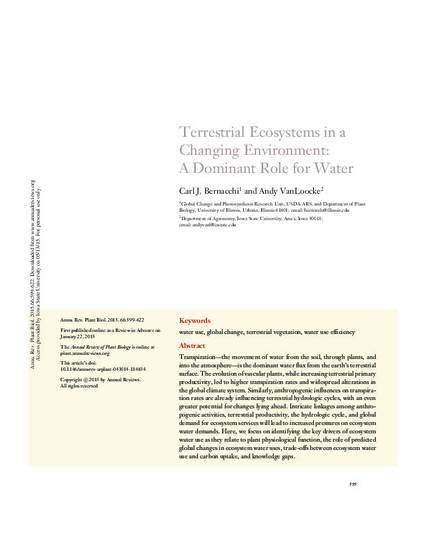
Transpiration—the movement of water from the soil, through plants, and into the atmosphere—is the dominant water flux from the earth's terrestrial surface. The evolution of vascular plants, while increasing terrestrial primary productivity, led to higher transpiration rates and widespread alterations in the global climate system. Similarly, anthropogenic influences on transpiration rates are already influencing terrestrial hydrologic cycles, with an even greater potential for changes lying ahead. Intricate linkages among anthropogenic activities, terrestrial productivity, the hydrologic cycle, and global demand for ecosystem services will lead to increased pressures on ecosystem water demands. Here, we focus on identifying the key drivers of ecosystem water use as they relate to plant physiological function, the role of predicted global changes in ecosystem water uses, trade-offs between ecosystem water use and carbon uptake, and knowledge gaps.
Available at: http://works.bepress.com/andy_vanloocke/4/

This article is from Annual Review of Plant Biology 66 (2015): 599, doi:10.1146/annurev-arplant-043014-114834.